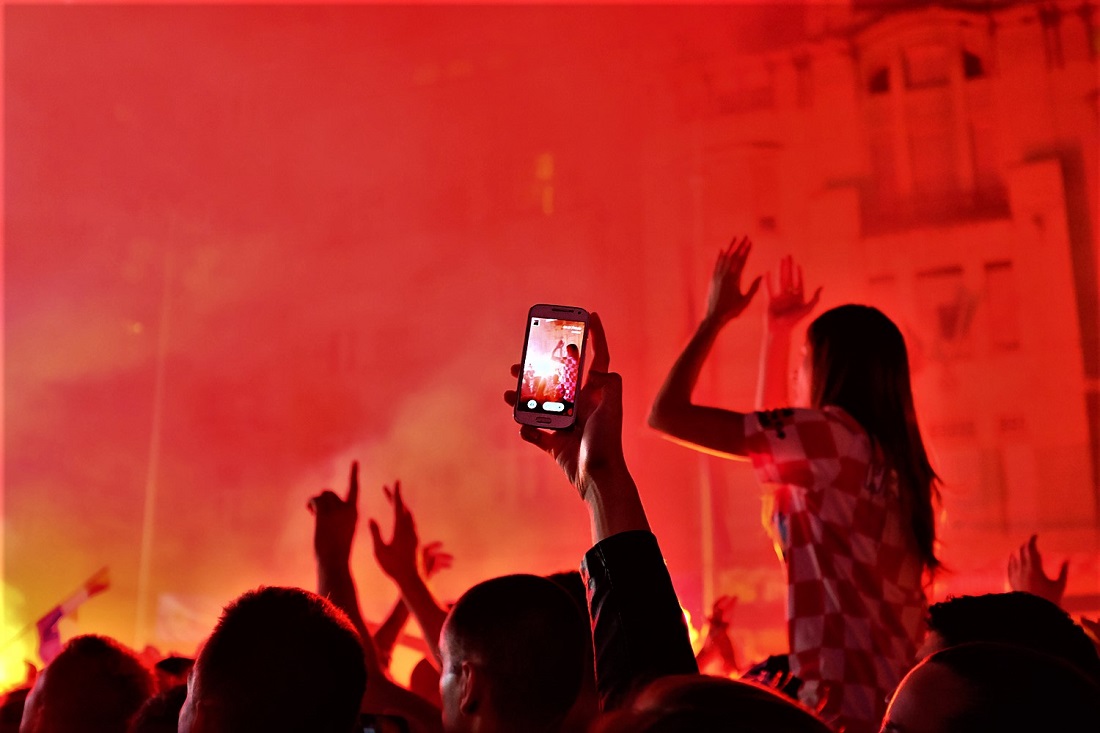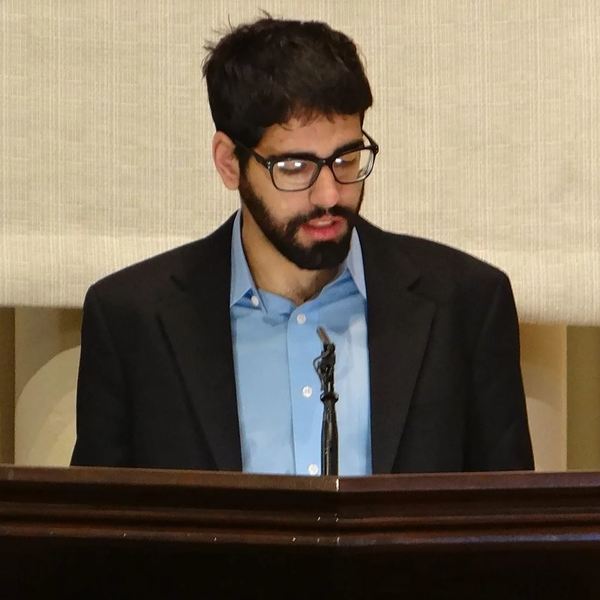Not too long ago I attended a concert put on by some Latin music stars I enjoy (and some I do not) at a massive stadium in South Florida. I had a general idea of what to expect: I had been to large concerts before, and I knew how crazed fans can become at these shows. After all, they adore these artists, these stars: absorbing their lyrics, studying their personal lives, following the gossip, and playing their music as the soundtrack to sundry events in their lives. Being a fan myself, I was quite excited at the opportunity to see some of them live.
But the show did not meet my expectations because the stars I expected did not fully appear. I do not mean physically—the performers were there, of course, in the flesh. Yet that flesh—once so sacrosanct in that most religiously charged of secular gatherings, the music concert—seemed unable to carry the weight of glory that it used to. It now had to share that glory with digital representations carried on the sea of screens that undulated in the stadium seats we shared. More than that, the artists seemed unable to command the room with just themselves; other artists not present had to be invoked, and the performers themselves were often accompanied by digital doppelgangers on large background screens who vied for the audience’s attention. It is this "digital displacement" that left me both stupefied and simultaneously illuminated by the time I left the show.
One instance of my surprise was by the in the "intro video" that introduced the set of one of the artists. I could not figure out the purpose of the video: was it a commercial? A hype mechanism? An informational slideshow about the artist in case there were unfamiliar fans there? At least, I comfort myself, we encountered the digital artist before the real one, the real object of desire. But the reality was more complicated, since for us fans hundreds of feet in the air, our primary experience of the artist was undoubtedly virtual, screen-mediated. To the unhelped eye our singing entertainer was a small man very far away. Throughout his set my eyes alternated between the little man on the stage and the big man on the screen, reminding myself, when I sensed I had lingered too long on the virtual, that I was here to see the "real thing," yet finding myself frustrated with the real thing’s inability to give itself to me at a distance. The digital displacing continued into the final set of the show wherein the final star would perform songs with his very own music videos, for those very same songs, running in the background.
Consider the situation. I paid money to sit in a stadium constructed precisely for events like these, events in which the majority of the audience consume a virtual experience of artists whose music they already enjoy virtually all of the time. In other words, I paid money to experience this music the way I always do, but with the added discomfort of stadium seating and some occasional—admittedly impressive—pyrotechnics. Hence the need for those fire-breathing jet streams across the front row: there must be something at this show that I have not already seen, since the event could only be considered "live" in a relative sense.
So much curmudgeonry, you say. Next time, dish out some more cash, score a better seats, and stop whining. Did you at least enjoy the group experience, that tangible intangible of concert-going in which fans find themselves united in their common love for the artist, the music, and the role it has played in their lives? Not quite. I simply could not, because it would be a stretch to identify the thousands gathered into that stadium as a corporate entity in any sense. For that, we would have all needed to direct our attention in one direction, to participate in the power of the line of sight that can foster expectation, fulfillment, and release—the primordial elements that make the music concert the closest secular analogue to the religious act of worship.
But this was all impossible, since the main spectacle of the concert was not on stage nor on the big screen. It was in the crowd. All evening and all around me I surveyed "fans" of all ages fidgeting with their own screens; adults, teenagers, children, all of them mashing buttons, setting up photo shots, filming throughout the night. Nothing surprising here, except that it was not the performers whom they were capturing with their phones. It was, instead, themselves. Selfies, group shots, aisle-photos—all of these were the more impressive spectacle for this audience. If the performers made it into these shots at all, it was mostly as background to the real stars of the night: the fans.
Undoubtedly these photos ended up on social media, their ultimate destination and true home. Which is to say that they ended up in that place where we go to shore up our identity, to reaffirm that we, indeed, are at the center of our carefully tailored universes. Some celebrities may even intermittently appear to bolster our claim to uniqueness. "I was at that concert—look!"
The artists themselves did nothing to disabuse the audience of these pretensions; in fact, they encouraged them. One singer called a fan to the stage and serenaded her with one of his most romantic ballads; an entrancing non-digital display of virtuality. And the other headliner of the night regularly reminded his audience that he was "from the 305" like they were, and that he was nothing without them. You may think this nothing more than the innocent gratitude of an artist returned home. Perhaps, but when set in the context of the wider show and its virtual displacements on stage and off, it begins to sound like something else. It says, in effect, you are the reason I’m here! You are the real stars!
Which is exactly what the audience wants to hear, or so they are saying by their incessant refraction of the night’s event through the digital devices by which they, along with the rest of the us, have learned to experience themselves. This audience was a prime example of what Thomas de Zengotita has called “the flattered self,” that remarkable product of our endlessly and inescapably mediated times. Flattered selves, if they do "exist," exist solely in the world of representation. Praesento me, ergo sum. And so everything which I consume must also, in some way, represent me, be about me. For de Zengotita (writing before the massive proliferation of the smart phone and the rise of social media), this means that music and artists increasingly sing about us, encourage us to "be who we are," even while their concerts invite more and more audience participation. The concert has become the club. But in the last decade things have progressed beyond what de Zengotita envisioned. The form of participation the audience now craves most is that which best "represents" themselves, which mediates their presence at the show, which takes them away from the once sacrosanct flesh of the artist and closer to the more desired spectacle of themselves.
Why does any of this matter for the religious imagination? Perhaps the adoration of musical artists and the emotional investment and identification with these artists misguided at best and idolatrous at worst. Nonetheless, the shift away from these secular substitutes for transcendence tell us something about the challenges technology poses to the future of religious forms of life. The flattered self is, by definition, utterly incapable of transcendence. It cannot receive from the outside; it can only overlay reality with its own "filters," trapped by the transcendental strictures of the categories of "share" and "like." One may bemoan the fact that pop artists can draw thousands to a stadium when it is difficult to keep the sustained attention of those same youth at church (World Youth Day notwithstanding), but at least in the past such simulacra of worship could at least keep the faculties of religious life—attention, expectation, presence—alive and at work. If grace builds on nature, what happens when nature begins to deteriorate?
As de Zengotita writes in Mediated: How the Media Shapes Your World and the Way You Live in It, "In concert, especially, these new heroes [musical artists] provide fans with the only experiences of transcendence most of them will ever know. Hence the undeniably religious quality of those events, when they go well, when the heroes meet the awesome expectations." As is clear from my narration of the show, at least at this particular concert these heroes could no longer meet expectations as they had to compete with their own digital representations, and especially with the digital representations of their audience. Our expectations have changed. If concerts are reduced to elaborate music-video backdrops to the "ultimate selfie," we have indeed crossed a threshold. The concert hall becomes a parable of the threat our mediated and technological age present us: a world in which nothing can draw us out of ourselves. And this is because in such a world nothing really happens to us. Not even the most elaborately staged events can disturb the one who has become his own event horizon.
One final anecdote. As I exited the stadium, I found a bizarre set-up as I passed the merchandise booth. Upon approaching I realized I was looking at a digital green screen. There it was, propped up so fans (for only $20!) so they could have a "picture" taken with the artist of their choice photoshopped into the frame. A new red-carpet.
But who is the real star of the show?


